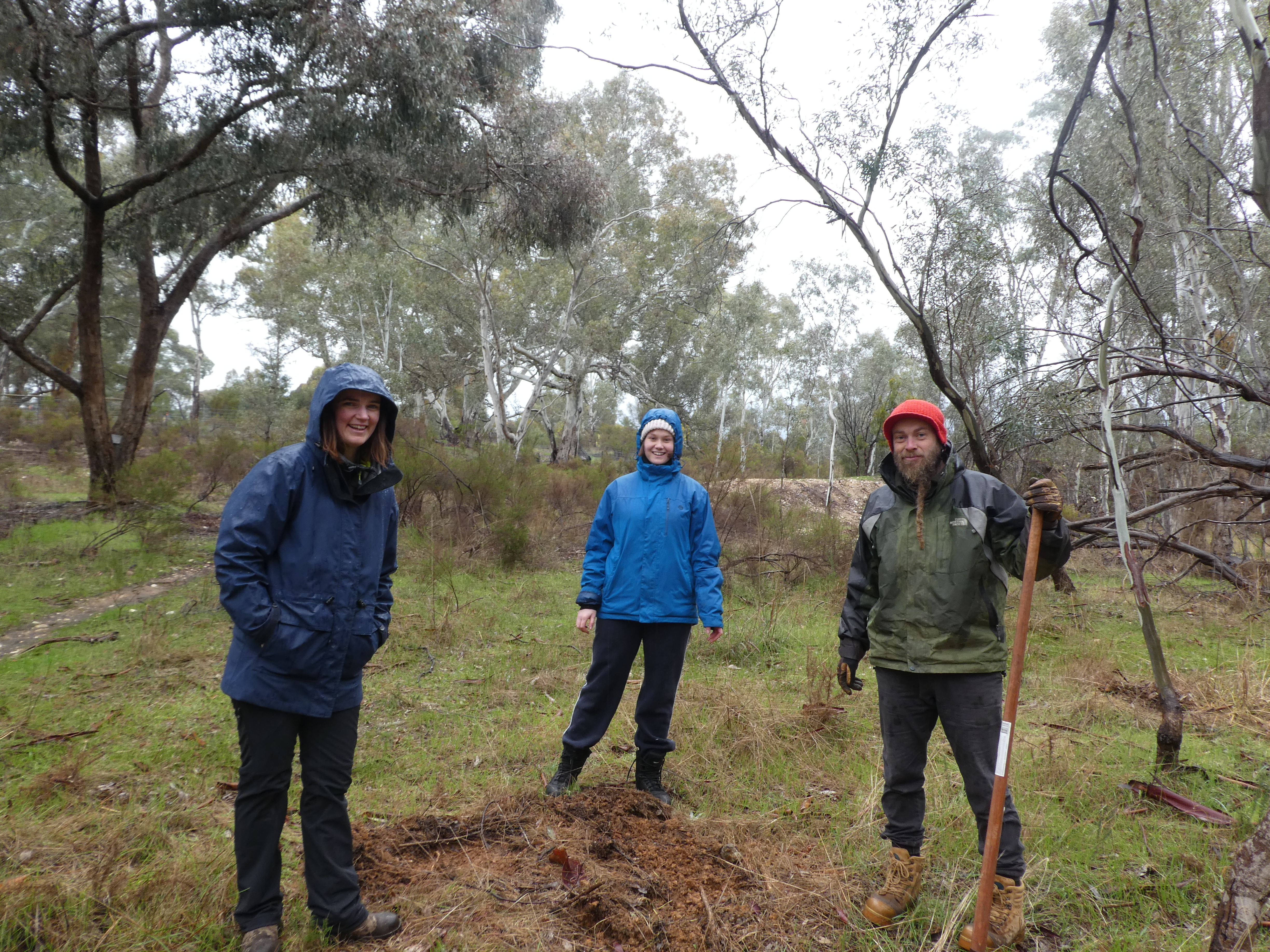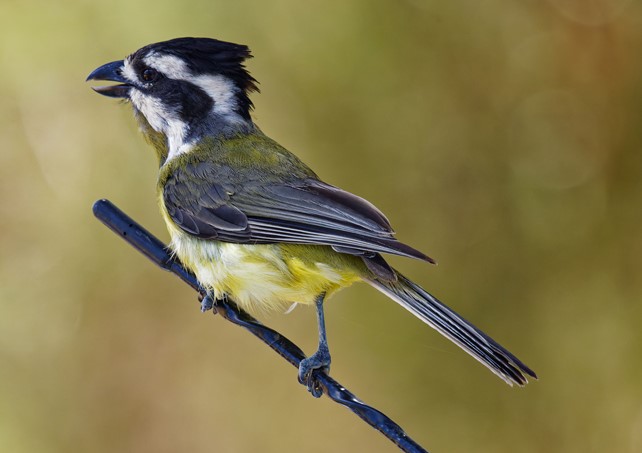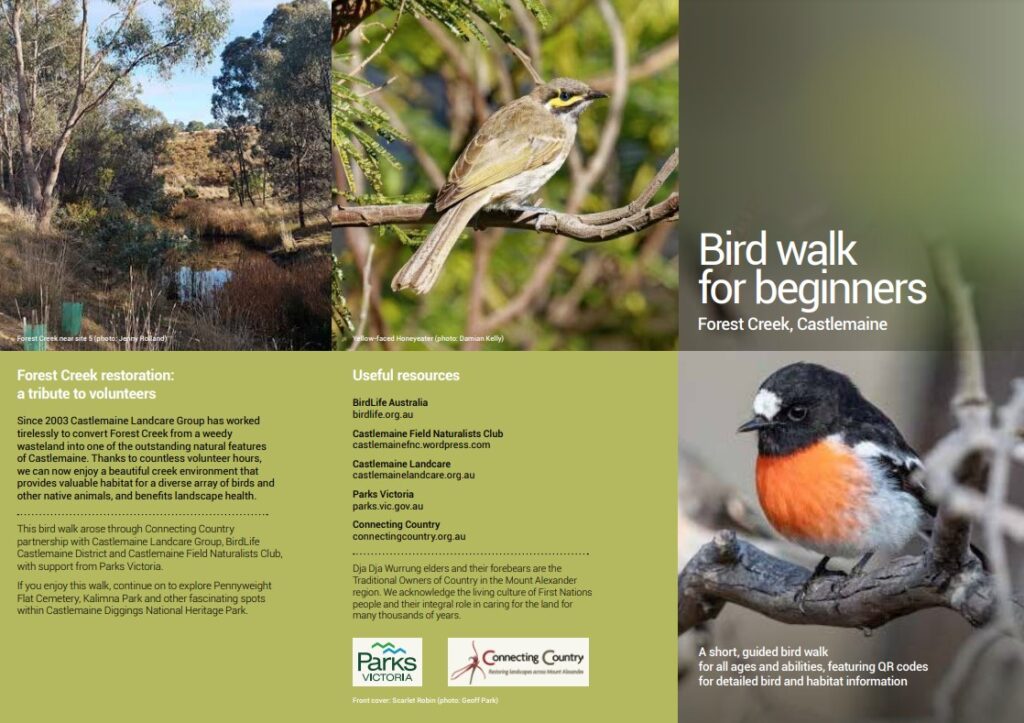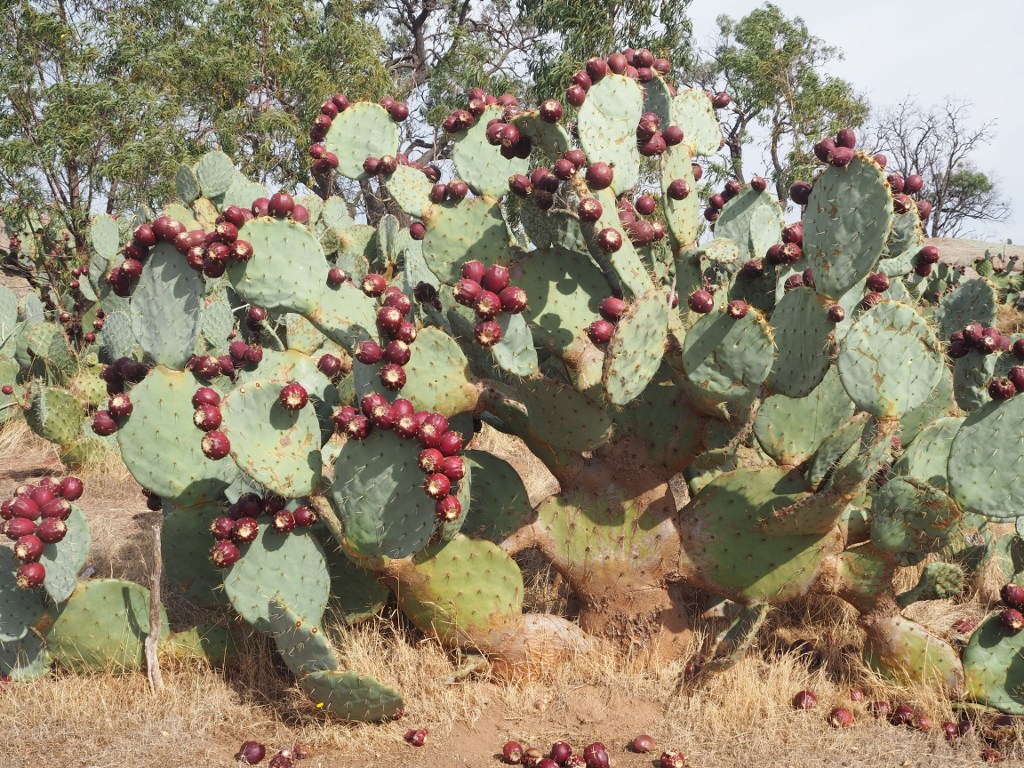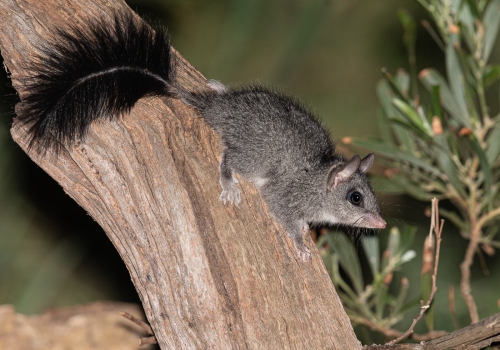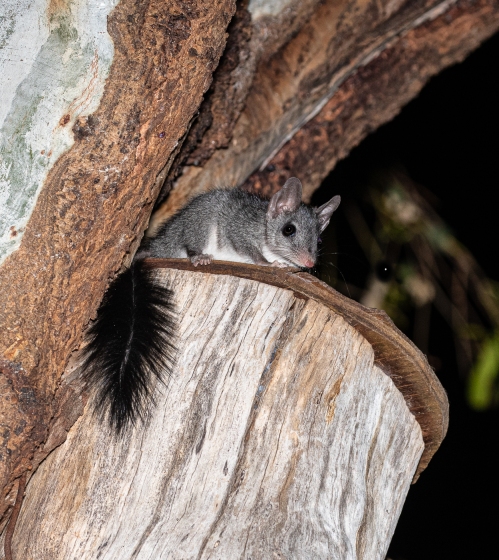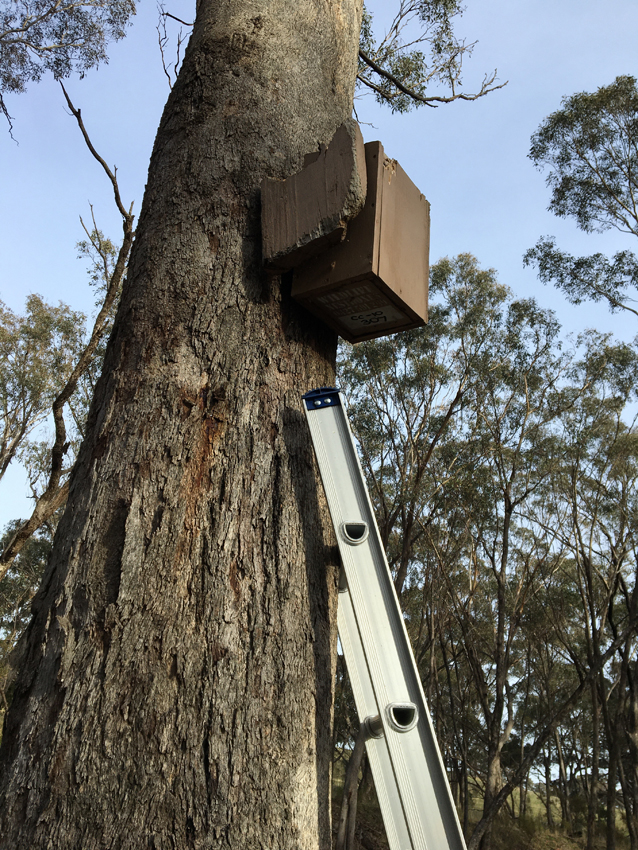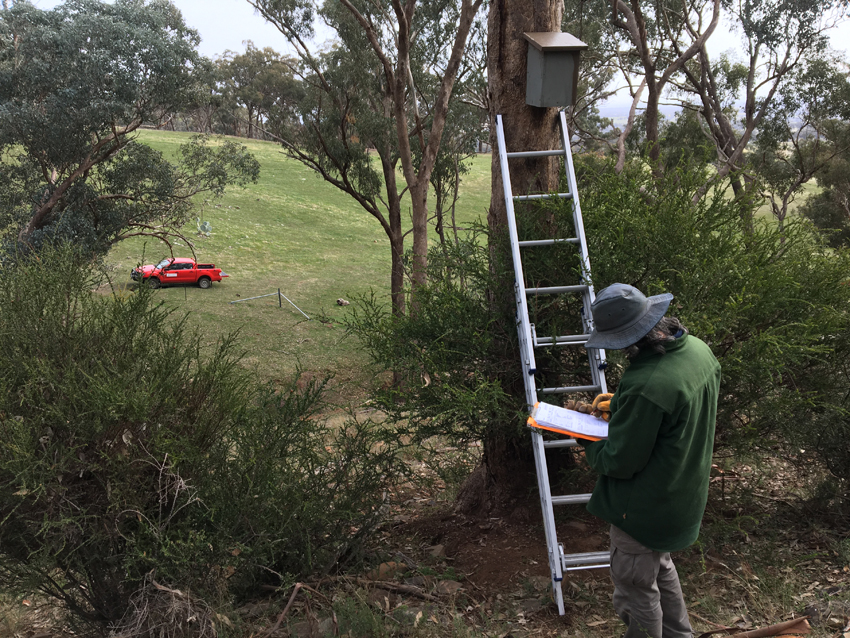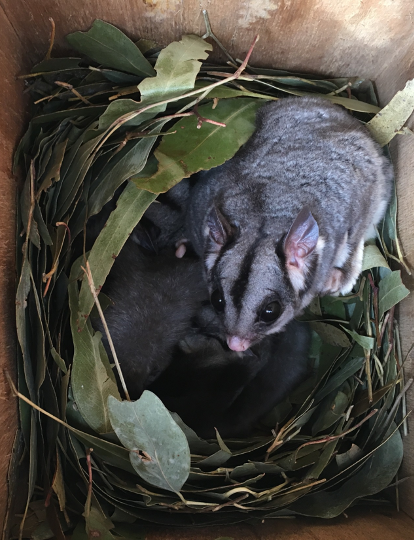Bird of the month: Flame Robin
Posted on 9 May, 2022 by Frances
Welcome to our 25th Bird of the month, a partnership between Connecting Country and BirdLife Castlemaine District. Each month we’re taking a close look at one special local bird species. We’re excited to join forces to deliver you a different bird each month, seasonally adjusted, and welcome suggestions from the community. We are lucky to have the talented and charismatic Jane Rusden from BirdLife Castlemaine District, and the brilliant Damian Kelly, sharing their writing and images about our next bird of the month.
Flame Robin (Petroica phoenicea)
True to the Flame Robins’ annual migration from higher and wetter altitudes in summer, to lower altitudes in winter, April saw them arriving in Central Victoria. They demonstrate classic altitudinal migration, breeding in mountain forests up to 1,800 m in elevation, utilising ridges and slopes, which is a little unusual. As a very general rule, gullies are preferred by most woodland bird species because they hold more moisture, and therefore support higher density and biodiversity of plant species. All this makes gullies more nutrient-dense and therefore good foraging for birds. So the Flame Robin is an interesting contradiction during the breeding season and summer months.
April 2022 bird surveys for BirdLifes’ Birds on Farms project in Castlemaine recorded Flame Robins in their preferred autumn and winter environment: edge habitat and dryer open woodland. They were spotted foraging from paddock fences along the vegetated Forest Creek corridor, on the edge of a disturbed but newly re-vegetated paddock.
The neon bright, deep orange breast and belly, contrasting with grey on the rest of the bird, makes the male Flame Robin distinctive and easy to identify. The female and immature birds are another matter entirely. They can easily be mistaken for Red-capped and Scarlet Robins, as they all tend to look small and brown. The bane of the birder’s bird watching life! However, in practice it’s the vivid male that will catch your eye, and take your breath away with its splendour.
For a small bird, Flame Robins can disperse over quite large distances. Banding studies show them moving up to 351 km and tending to return to the same over-wintering sites year after year. The species distribution ranges from south-east Queensland to around the edges of South Australia, as well as Tasmania, and outside the breeding season, up to the Murray River in Victoria.
Outside the breeding season, Flame Robins will form small flocks of typically 6-14 birds. However, along Forest Creek larger flocks have been recorded, which is not so unusual.
Bonds between breeding pairs of Flame Robins often persist between seasons. The breeding season is August to February, when they build cup-shaped nests of grass, bark strips, moss and spider web. They lay 2-3 eggs per clutch and it’s not uncommon for pairs to raise multiple broods.
The major disturbance of bush fires and logging can be a temporary boon to Flame Robins. Records provide evidence of them using recently burnt areas, especially outside the breeding season. As the vegetarian recovers, numbers of Flame Robins decreased in disturbed areas.
Written by Jane Rusden and Damian Kelly
Photos by Damian Kelly
Research confirms: planting brings back woodland birds
Posted on 4 May, 2022 by Frances
Connecting Country works with landholders and community groups to restore landscapes across the Mount Alexander region of central Victoria, with a focus on restoring habitat for woodland birds on both public and private land. Our key actions include fencing to protect remnant vegetation, changing grazing regimes, controlling pest plants and animals, planting revegetation and nurturing natural regeneration.
We focus on restoring woodlands and degraded landscapes for the benefit of our woodland birds and other wildlife. Through Connecting Country’s long-term bird monitoring program, we have a solid database that allows us to assess changes in woodland bird populations over time. Analysis indicates that our landscape restoration efforts are having a positive impact on woodland birds.
We were heartened to recently discover some robust scientific research that supports our observations: revegetation with suitable indigenous plants really does bring back woodland birds! The new research was published in the Journal of Applied Ecology, and shows planting trees and shrubs brings woodland birds back to farms, from superb fairy-wrens to spotted pardalotes. The research was conducted by a team of respected academics, including Professor Andrew Bennett, who is a long-term friend of Connecting Country and helped design our bird monitoring program.
The research also concluded that scattered trees are valuable habitat features for birds. These large old trees act as stepping stones that help birds move across the landscape, and provide foraging and nesting habitat for species such as Brown Treecreeper, Laughing Kookaburra and Eastern Rosella. They found individual patches of revegetation have the greatest value for birds when they include a diverse range of trees and shrubs, are close to or connected with native vegetation, and are older (meaning the plants have had more time to grow).
To read a news article about the research, courtesy of The Conversation website – click here
To read the full scientific article in the the Journal of Applied Ecology – click here

Connecting Country have been providing plants for landholder revegetation projects for over a decade (photo by Jacqui Slingo)

Connecting Country has established many successful restoration projects, including returning biodiversity to degraded paddocks (photo by Connecting Country)
Castlemaine Field Naturalists Club: May 2022 events
Posted on 4 May, 2022 by Ivan
As a monthly tradition, our friends at Castlemaine Field Naturalists Club (CFNC) hold a meeting with a guest speaker on the second Friday of the month, followed by a group excursion or field trip the following day. Castlemaine Field Nats provided the following details about their May 2022 meeting and excursion, which look very interesting and exciting. All are welcome to attend. For more information on CFNC, please visit their website – click here
Monthly meeting: Friday 13 May 2022 at 7.30 pm Uniting Church Fellowship Room, Lyttleton St, Castlemaine VIC
Feral deer – managing and monitoring
with Peter Jacobs (Deer Project Officer for the Invasive Species Council)
Peter will talk about the emerging problem of feral deer in Victoria. The talk will discuss the identification and distribution of the 4 main feral deer species in Victoria, the economic, social and environmental impacts they are having, and the cost to the community.
Peter will also present on Victoria’s laws that protect feral deer as a game species and what strategic and tactical options there are for feral deer control in Victoria. This will include an overview of the control programs that are currently in place as well as what we need in the future to control this serious pest.
Our May monthly meeting will be held in person again. Members and guests can arrive at the hall from 7.15 pm and are welcome to stay after the meeting for supper and a chat. Please sign in on arrival.
Our guest speaker will follow the usual ‘observations’ session when members can share recent interesting sightings with an option to show a photo or two. If you have photos for the meeting, please email JPEG file(s) to Euan Moore at calamanthus5@bigpond.com by noon on the day of the meeting.
Excursion: Saturday 14 May 2022 from 10 am ALL DAY – Seeding Victoria and La Gerche trail, Creswick VIC
Seeding Victoria’s seed bank
Seeding Victoria Inc. is a not for profit, charitable organisation that manages several seed banks in Victoria. For our May excursion, we will be privileged to have a tour of Seeding Victoria’s seed bank at Creswick as recently featured in the ABC’s Gardening Australia. Dan Frost who manages this seed bank will explain how seed is appropriately sourced and maintained under strict conditions to supply revegetation projects. We will also learn how Seeding Victoria not only provides provenance-based seed sales but also a consultancy service for collection and caring for seed as well as site assessment and direct seeding advice.
The tour of the seed bank and discussion will take about 1.5 hours after which we will have a picnic lunch and a walk along the La Gerche Trail in the afternoon.
The La Gerche Trail is a 2.2 km long, easy walking track in the Creswick State Forest. The trail commemorates the work of John La Gerche, the first bailiff for the forest charged with halting the rampant cutting of trees for mining and fuel-wood and allowing regeneration of the forest. The trees planted by La Gerche are now over 100-years old and include a large variety, both native and introduced for experimental purposes. There are interpretative signs along the way.

La Gerche Gully Loop is a fascinating trial through exotic and native forests (photo: Parks Victoria)
Meet at the Octopus (Duke St, opposite the Castle Motel, Castlemaine VIC) at 10 am, or at the Seed Bank (co-located with the Parks Victoria complex in Sawpit Rd, Creswick VIC) at 10.50 am. We will meet at the old oak tree in the gardens near the Seed Bank. Bring lunch, chairs, sturdy shoes and water.
The field trip will be cancelled in extreme weather conditions or if there is a high fire risk.
Plant guard workshop – Intrepid volunteers needed!
Posted on 28 April, 2022 by Frances
Our local Intrepid Landcarers are getting together to help out Connecting Country, as well as enjoy a little fun and socialising. Intrepid Landcare is a place where young people (late teens to thirties) can come together and create the change they want to see in the world. Read on for details.
Hi Intrepid Landcarers! Feel like getting your hands dirty for a good cause? Connecting Country is looking for volunteers to help make plant guards this Sunday 1 May 2022. The guards will protect Silver Banksia and Sweet Bursaria which are being planted in special Climate Future Plots (to read more – click here)
Join us from 2 pm-5 pm at the Connecting Country depot (11 Campbell Street, Castlemaine VIC), then we’ll head to The Taproom for a drink and cheese platter. Feel free to join us for all or part of the day and contact Asha on 0418 428 721 if you have any questions.
Be sure to dress in warm sturdy clothes and bring some water (and optional thermos and snacks if you’re organised!). This work involves working outdoors, manual handling of heavy equipment (wire) and using tools to cut wire. No special skills are needed, but volunteers need a reasonable level of fitness.
Hope to see you there!
To learn more about Intrepid Landcare – click here
Bird walk for beginners – get your brochure now
Posted on 13 April, 2022 by Frances
Thank you for the positive feedback we’ve received since our recent launch of the ‘Bird walk for beginners’ along Forest Creek, Castlemaine VIC.
We are pleased to announce the printed birdwalk brochure is now available from Castlemaine Visitor Information Centre (44 Mostyn St, Castlemaine VIC).
You can also download a copy – click here
Our new ‘Birdwalk for beginners’ brochure allows the community to access an easy, self-guided bird walk. The walk starts on Forest Creek in Wesley Hill and follows a gently-graded, maintained walking path for around 1.5 km. There are eight sites along the bird walk, providing excellent opportunities to visit some great bird-watching spots, with QR codes in the brochure help you learn about the sites, identify birds and link to further information.
Here is some of the lovely comments so far:
- Congratulations on a very successful launch of the bird walk! A wonderful project, well executed. – Jenny
- Well done to Connecting Country for creating this great idea and delivering it. You certainly showed the value of partnerships in the Shire … I hope the brochure takes off and that landcare work can continue to help build up areas of interest for the community to enjoy. Thanks for all the work and liaising. It melts the borders between organisations. – Christine
- This is a wonderful project – we downloaded and printed the brochure in b&w. We used our mobile phone to read the QR code and were delighted with the information and photos we saw. We look forward to doing the walk soon. Thanks to all involved. – Judy
- A wonderful project, professionally executed as usual and a great launch. I know what I’m doing with the grandchildren over Easter. – Chris

Some of the dedicated contributors and supporters who played a role in the creation of Castlemaine’s new Bird Walk for Beginners launched this week beside Forest Creek (photo by Eve Lamb)
Our ‘Birding for beginners’ project was supported by the Victorian Government through Parks Victoria’s Volunteering Innovation Fund.
Bird of the month: Crested Shrike-tit
Posted on 12 April, 2022 by Frances
Welcome to our 24th Bird of the month, a partnership between Connecting Country and BirdLife Castlemaine District. Each month we’re taking a close look at one special local bird species. We’re excited to join forces to deliver you a different bird each month, seasonally adjusted, and welcome suggestions from the community. We are lucky to have the talented and charismatic Jane Rusden from BirdLife Castlemaine District, and the brilliant Damian Kelly, sharing their writing and images about our next bird of the month.
Crested Shrike-tit (Falcunculus frontatus)
This month’s bird might be small in size, but packs a punch in character and arguably wins the prize for craziest hair do. The Crested Shrike-tit is boldly coloured, with a bright yellow chest and striking black and white head … and as it’s name suggests, a black mohawk-like crest. Often it’s heard before seen because of the ripping noise as it tears bark off trees using its powerful bill, searching for invertebrates, favouring spiders and beetles. Interestingly they will also eat fruit and other vegetable matter on occasion. They have even been recorded using a stick to procure hard-to-get-at insects, which is notable as using tools is normally associated with intelligence. For a pleasant change, it’s also a bird that’s easy enough to see as they can be bold and quite curious, and of course strikingly-coloured. Also welcome to the bird watcher is their distinctive high-pitched whistle, another solid identification indicator. However, like so many Australian birds, they are excellent mimics.
Damian observes Crested Shrike-tits love a bathe in puddles, and I often see them at the birdbath in my garden. Typical of my place, they can be found in eucalyptus forests with a preference for gullies, and in dryer forests, along water courses. Their distribution covers eastern and southern Australia, as well as south-west Western Australia, but rarely into tropical forests.
Usually Crested Shrike-tits are found either singularly or in pairs, though on occasion I’ve observed what I think is a family group in mid-summer. They build a deep cone-shaped nest, often high up in a vertical tree fork. Made of dry grass, moss, lichen and bark, the nest is held together with spiders web, and will hold 2-3 eggs. (Poor spiders get eaten by Crested-Shrike-tits, then their webs are torn down by them too!) Both parents brood and feed the chicks, but in some instances there will be a one or more helpers at the nest who feed young. The home range of the Crested Shrike-tit is quite large, but mobility is generally restricted to autumn, and otherwise they are quite sedentary.
Damian Kelly, who is a master at lurking quietly and unobtrusively in the bush, writes of his wonderful observations of this stunning bird:
‘They are an intriguing bird, as they can be quite inquisitive and will often come up close and personal. One time at Railway Dam I returned from a walk to find a bird clinging to the radio antenna of my car. It didn’t fly off but just observed me as I took some nice photos. A few days later at the same spot I was sitting in the car with the door wide open when a shrike-tit alighted on the edge of the door, again observing me closely. I cannot be sure if this was the same bird. I could hear another individual calling in the trees nearby but that one never came close.’
I have to admit to getting a thrill every time I see a Crested Shrike-tit, as they cock their head vigorously, showing off their crazy crest to full advantage.
Written by Jane Rusden and Damian Kelly
Images captured by Damian Kelly
Visit YouTube to view a Crested Shrike-tit bathing and calling:
Volunteer with Connecting Country: nest boxes and climate future plots
Posted on 7 April, 2022 by Jess
We are very excited that we have not one, but two important projects requiring volunteer support over autumn 2022.
One project involves climate future plots and the other involves nest box monitoring. Both projects are close to our hearts, and we believe they will make valuable contributions to the biodiversity conservation into the future.
About our ‘Future-proof our forests’ project
Climate future plots aim to enhance the resilience of natural landscapes to the changing climate. They are areas of revegetated land incorporating plant species that already occur naturally in the area. These plots include both locally-sourced plants, as well as plants of the same species from other provenances that have hotter and drier, or cooler and wetter, climates. The plants from the different provenances breed and produce ‘climate-adapted seed’. Plants grown from this new seed are potentially more resilient to changes to the changing climate. This is a cutting-edge project, and despite consulting widely with experts who are supportive of the project, we are still not sure what the outcome will be – there is a lot to learn! Monitoring these plots provides opportunities to actively inform future restoration and biodiversity conservation management in the Mount Alexander area.
Connecting Country has secured funding through the Ross Trust for our ‘Future-proof our forests’ project to establish two climate future plots of 500 plants right here in Mount Alexander region between 2021-23. We are focusing on two key species from our local area: Silver Banksia (Banksia marginata) and Sweet Bursaria (Bursaria spinosa). Both plant species were once much more widespread in our region. Both species provide important resources for wildlife, such as the Eltham Copper Butterfly and the (locally) extremely rare Eastern Pygmy Possum, as well as many native bird species. Our climate future plots will create seed production areas and provide climate-adapted seed for use in future revegetation projects. They will also help to identify individual plants and provenances most suited to survive in our changing climatic conditions.
To read some interesting commentary about the history of Silver Bankisa in the Mount Alexander area, visit these blog posts by Geoff Park (click here) and Ian Lunt (click here).
We are seeking volunteers to assist with a large and extremely critical task – preparing 1,000 robust plant guards to protect our very precious, carefully-selected baby Silver Banksia and Sweet Bursaria plants from being eaten by rabbits and kangaroos.
The plant guard volunteer role involves:
- Working outdoors at sites in the Castlemaine and/or Kyneton area.
- Working as part of a team.
- Following safety procedures.
- Carrying star pickets and wire rolls.
- Cutting wire fencing material.
- Constructing plant guards.
This work involves working outdoors (in paddocks and/or at the Connecting Country depot in Castlemaine), manual handling of heavy equipment (wire and star pickets) and using tools to cut wire and assemble guards. No special skills are needed, but volunteers need a reasonable level of fitness.
About nest box monitoring
Monitoring our favorite marsupial, the frisky Brush-tailed Phascogale (also known as the Tuan), is one of our core monitoring activities here at Connecting Country. We’re excited to be planning our nest box monitoring for autumn 2022.
Connecting Country’s nest box monitoring program was established in 2010. Our 450 nest boxes across the Mount Alexander region of central Victoria allow us to collect valuable scientific data about the threatened Brush-tailed Phascogale and other arboreal mammals. For more information on our nest box monitoring – click here
We are thrilled to have funding from WIRES to support our 2022 nest box monitoring. WIRES (NSW Wildlife Information, Rescue and Education Service Inc.) is Australia’s largest wildlife rescue organisation.
Our nest boxes will be led by an intrepid team of trained volunteer team leaders.
We are seeking volunteers to assist Volunteer Team Leaders to conduct nest box surveys, with feet planted firmly on the ground (i.e., not climbing ladders).
This nest box volunteer role involves:
- Travel within the Mount Alexander region.
- Following safety procedures.
- Carrying ladders, replacement nest boxes, and equipment to sites.
- Helping to navigate to sites.
- Writing observations and recording data.
- Taking photos.
Field work roles require working on uneven ground and carrying ladders (these are heavy!) through the bush, sometimes in hot or cold weather. Some sites require hikes through uneven terrain, or climbing over fences. Volunteers need a reasonable level of fitness, and an adventurous spirit!
If you are interested in assisting us, please send a brief email to jess@connectingcountry.org.au stating:
- If would prefer to assist creating plant guards, inspecting nest boxes – or both!
- Your availability during April and May 2022.
- Why you are interested in volunteering – we ask this so we can do our best to make your volunteering experience as useful as possible for you!
- A brief summary of any relevant experience.
- Any questions you have.
Volunteering on environmental projects is a great way to learn about our local environment, keep active, contribute to nature conservation, learn skills and meet new people. We look forward to hearing from you!
New bird walk launched at Forest Creek, Castlemaine
Posted on 7 April, 2022 by Jacqui
Forest Creek in Castlemaine was abuzz with activity this week, as 35 bird walkers came together to celebrate the official opening of ‘Bird walk for beginners’, a brochure-guided walk along a 1.5 km stretch of the Leanganook Track at Forest Creek in Castlemaine VIC. The birdwatchers ranged from absolute first-time beginners to more experienced birders from BirdLife Castlemaine and Castlemaine Field Naturalists Club.
The group heard from local experts and volunteers: Christine Kilmartin from Castlemaine Landcare Group, Euan Moore and Jenny Rolland from Castlemaine Field Naturalists Club, and Jane Rusden and Damien Kelly from BirdLife Castlemaine. All had a hand in producing the brochure with us, ensuring their decades of experience with local birdlife and vegetation was captured in the bird walk brochure and online content for all to enjoy.
Councillor Gary McClure from Mount Alexander Shire Council and Noel Muller from Parks Victoria were among our special guests there to help launch the walk with our celebratory morning tea on 6 April 2022.
Christine highlighted the transformation of Forest Creek over the past decades, thanks to thousands of hours of volunteer work from Castlemaine Landcare Group. Their incredible work has seen the creek reappear after removal of massive infestations of gorse and other weeds, and planting out with a diversity of locally-native understorey plants.
This ongoing process has created a much more diverse habitat that supports a range of native birds and other wildlife. We know this because dedicated and experienced volunteers have been doing bird surveys along the creek during the transformation, to monitor the changes and return of bird species over time. These bird surveys complement Connecting Country’s network of 50 long-term bird survey sites across our region, which are monitored each year by Connecting Country volunteers, with the aim of monitoring change as land is restored through weed control and strategic revegetation.
Our new ‘Birdwalk for beginners’ brochure allows the community to access an easy, guided bird walk, with QR Codes along the way to learn about the sites, and links to further bird information and bird calls. This project aims to attract new birdwatchers, as well as celebrate the excellent restoration work that volunteers have achieved over the past few decades along Forest Creek. Bird walks are an ideal way to get people out enjoying and exploring the many natural assets we are blessed with here in central Victoria.
The printed birdwalk brochure will be available from Connecting Country and Castlemaine Visitor Information Centre (44 Mostyn St, Castlemaine VIC), or you can download a copy – click here
The walk is approximately 1.5 km long (one-way) and is located along a gently graded, well-maintained walking path suited to a range of abilities. There are eight sites along the bird walk, providing excellent opportunities to visit some great bird-watching spots, with a species list for each site on tap via the QR Codes in the brochure.
Bird watching is a great activity that almost everyone can enjoy, and this walk aims to increase the accessibility of bird walking in our region. The COVID-19 lockdown period has seen a ten-fold increase in the number of new birdwatchers around the country. People are craving nature and the outdoors, prompting them to start their bird watching journey and enjoy the challenges of how to differentiate some of the trickier species.
Central Victoria is considered a birding hotspot and we find birds often prompt you to explore wonderful places that you never knew existed!

Christine Kilmartin from Castlemaine Landcare Group shares the story of the transformation of Forest Creek in recent decades (photo by Ivan Carter)
We extend a big thank you to Castlemaine Landcare Group, BirdLife Castlemaine, Castlemaine Field Naturalists Club, Parks Victoria and Mount Alexander Shire Council for supporting this project.
This event was part of Connecting Country’s ‘Birding for beginners’ project supported by the Victorian Government through Parks Victoria’s Volunteering Innovation Fund.
Volunteer opportunity with Needle Grasses in Castlemaine
Posted on 4 April, 2022 by Jacqui
Volunteer opportunity in Castlemaine!
If you would to learn more about managing Needle Grasses and attend a working bee, please contact Margaret Panter for details on where to meet and what to bring on (03) 5470 5072 (7 am-7 pm). Margaret is holding a socially-distanced working bee in the Castlemaine Botanic Gardens this Thursday 7 April 2022 starting at 9.30 am. No experience necessary, and volunteers are welcome to attend all or part of the session, as their availability allows.
Needle grasses, and in particular, Chilean Needle Grass (Nassella neesiana), are an increasingly serious pasture and environmental weed in central Victoria. They are very invasive and form dense infestations in pastures, bushland and roadsides. They can tolerate drought and will seed prolifically, including self-pollinated seed in the stem and base of the plant! This allows them to easily spread via equipment and machinery.
It has been estimated that the potential distribution for Chilean Needle Grass alone exceeds 40 million hectares across Australia. There are at least a few introduced Needle Grasses and many look-a-like native grasses in our region. For where to start with telling them apart see our earlier post – click here
Seeking contractor expressions of interest for planting
Posted on 31 March, 2022 by Jess
Connecting Country is seeking to expressions of interest for a contractor to plant 1,000 tubestock plants across two properties in the Mount Alexander region of central Victoria around June 2022.
This project requires careful location and labelling of the plants so that each plant can be tracked and monitored into the future. Each plant will be protected by a wire guard.
If you are interested, please contact info@connectingcountry.org.au by Monday 18 April 2022.
Please provide us with the following information:
- Your schedule of rates.
- How many plants you usually plant in a day.
- When you are available to plant the plants.
- Your experience with similar projects.
We look forward to hearing from you!
Thank you for donating to Tiny houses for Tuans!
Posted on 31 March, 2022 by Jess
We are so grateful to everyone who has donated to our recent campaign to raise funds for nest boxes. Thanks to you, we have just placed an order for 60 tuan nest boxes with our friends at Wildlife Nestboxes.
A huge thank you to our Tiny Houses for Tuans donors: Adam Purcell, Bergen O’Brien, Brendan Sydes, Bridget Farmer, Bronwen Algate, Carolyn White, Chris Lawrence, Elle Fox, Geoffrey Sutter, Jane Rusden, Jennifer Rolland, Jessica Seidel, John Carruthers, Lesley Carlin, Lisa Rowe, Maree Cheesman, Michelle Hanslow, Patricia Robins, Petra Fischer, Philip Hopley, Smiley Williams, Stuart Brown, and 12 other anonymous donors who generously contributed to the project.
Receiving donations like this means a lot to us here at Connecting Country. It helps us practically – we would not have been able to replace these nest boxes without your support – but it also warms our hearts and lightens our outlook for the future. On behalf of our staff, nest box volunteers, and of course, the Tuans – thank you!
Don’t forget, here are some other ways you can help threatened Tuans:
- Keep pets, especially cats (known predators of phascogales), indoors at night when Tuans are active.
- Retain leaf litter, logs, and trees (especially mature trees) on your property, as these provide foraging and den resources for tuans.
- Provide your own ‘Tiny Houses’ by installing nest boxes on your property. To contact a local provider, Wildlife Nestboxes – click here
- Contribute to restoring healthy forests by joining your local Landcare or Friends group. To find a group – click here
- Consider volunteering to monitor nest boxes with Connecting Country (next surveys in autumn 2022). To register your interest – email jess@connectingcountry.org.au
- Share our campaign with your friends and networks.
Agriculture Victoria workshop on wheel cactus – 7 April 2022
Posted on 31 March, 2022 by Frances
Our friends and neighbours at Loddon Plains Landcare Network (LPLN) are promoting a new Wheel cactus workshop and opportunity to learn more about managing this prickly weed. Please read on for details.
Agriculture Victoria is conducting a Wheel cactus workshop next Thursday 7 April 2022 in Buckrabanyule (near Wedderburn) VIC.
In recent years, it is apparent that landholders and groups are spending more time than ever managing for this weed. The community understands the very real threat that Wheel cactus presents and, given its severity and terrible invasiveness, LPLN encourages all members and residents to attend and provide your voice of support to provide on-ground action and management against this weed.
LPLN will be in attendance and plans to present its proposal of the formation of a community-led Wheel Cactus Management Taskforce, providing community support and development of a Regional Management and Action Plan.
For more information please refer to the event flyer – click here
Bird of the month: Common Bronzewing
Posted on 29 March, 2022 by Ivan
Welcome to our 23rd Bird of the month, a partnership between Connecting Country and BirdLife Castlemaine District. Each month we’re taking a close look at one special local bird species. We’re excited to join forces to deliver you a different bird each month, seasonally adjusted, and welcome suggestions from the community. We are lucky to have the talented and charismatic Jane Rusden from BirdLife Castlemaine District, and the brilliant Damian Kelly, sharing their writing and images about our next bird of the month.
Common Bronzewing (Phaps chalcoptera)
This month we are looking at the Common Bronzewing, simply because they are resident at my place and are really quite odd! Regularly seen foraging and using the bird baths, for such a flighty shy bird, they have become quite used to us. It was a female having a prolonged bathe, for about 20 minutes, that drew my attention. She sat low in the water and rolled on her side, wing in the air (see photo), having a good soak, as if having a luxury spa. Pedicure next? I’ve seen Emus do similar, but they are enormous with such crazy long legs, so what else are they going to do? Common Bronzewings also clap, not so much in applause, but when flushed. They will usually fly from the ground up into a tree. As they take off, they clap their wings a few times, and once landed, will bob their heads as they look at you from a safe perch.
The Common Bronzewing is exactly as its name suggests, having bronze colours under the wing and being common throughout most of Australia from coasts to the Mallee. However, they were not always common as they were once illegally shot for food and sport. Thankfully, now they are easily found in Central Victoria, favouring wooded areas. They can also be found in suburban gardens, which is an indication of their adaptability. Their diet consists mainly of seeds, with occasional leaves and invertebrates. I see the resident ‘Bronzies’ foraging on the ground or in low bushes, singularly or in groups of two or three, mostly in the morning or at dusk. They visit my bird baths for a drink, most often at dawn or early morning and dusk. This is typical behaviour for the species.
Although not the only bird to compete in the scrappiest nest award, they are up there with the best. There’s a considerable pile of fine Casuarina twigs on the ground that I need to sweep up, which is the remains of a nest building attempt on top of the fire shutter housing above our windows. There’s far more twigs on the ground than ever makes it into their questionable nest building. In fact eggs roll out on a regular basis. I often carry on about how intelligent birds are, but I’m not so convinced when it comes to Bronzies. Don’t tell anyone I said that about a bird!
However, when the iridescent patch on their wings lights up, throwing flashes of golden yellow through teal green, magenta and purple colours, they are quite stunning and majestic. Their soft pinky brown chests, grey upper body and creamy white forehead on the males set off their bright pink feet beautifully. They can be easily confused with the darker and less iridescent Brush Bronzewing, which can be see along Forest Creek on occasion. Also confusing is their deep booming call, with repeated long notes that can easily be confused with the Painted Button-quail, who favours the same habitat. Damian and I have nearly confused them when heard in Kalimna Park, for example.
There’s a lot to say about this beautiful species. They fly quite fast, with speed measured from vehicles at 58-60 km/hour, and a maximum of 67 km/hour. Movement in response to food and water availability is a regular occurrence for at least part of the population, with distances up to 360 km being recorded.
Another fun fact about the Common Bronzewing is they can safely feed on Gastrolobium bilobum, commonly known as heart-leaved poison, which is a highly toxic plant common in western and northern Australia. This may explain why, in at least some areas, they are not particularly hunted by cats and dogs, who would normally find a largely ground dwelling bird easy prey.

Female Common Bronzewing lying on its side and having a good soak in a bird bath (photo by Jane Rusden)
Jane Rusden
BirdLife Castlemaine District
Update on Tiny Houses for Tuans
Posted on 16 March, 2022 by Jess
We are so, so grateful to our amazing community!
We are delighted to announce that we received a total of $5,000 in donations in the first five days of our ‘Tiny Houses for Tuans’ fundraising campaign! At the time of writing, we are only $311 away from reaching our goal of raising $6,000 to replace 60 broken nest boxes for our long-term Tuan nest box project.
To read more about this project – click here
The Tuan (also known as the Brush-tailed Phascogale) is a very cute hollow-dependent marsupial carnivore that can easily be identified by its characteristic black brushy tail. Phascogales eat mainly invertebrates, and forage for food on and under the bark of trees, on logs, and in leaf litter on the ground. They have an extraordinary life history – all males die from stress following their first breeding season before they reach one year of age. This threatened species is in decline in Victoria and has undergone substantial range contractions and regional extinctions. Key threats include predation by cats and foxes, climate change and drought, habitat removal and degradation, and the extensive loss of trees with hollows. Recent research has highlighted that the Mount Alexander region is a stronghold for tuans and is important for the future conservation of this species.
To make a donation and contribute to this project – click here
Can’t donate? Here are some other ways you can help threatened tuans:
- Keep pets, especially cats (known predators of phascogales), indoors at night when tuans are active
- Retain leaf litter, logs, and trees (especially mature trees) on your property, as these provide foraging and den resources for tuans
- Provide your own ‘Tiny Houses’ – consider installing nest boxes on your property
- Contribute to restoring healthy forests by joining your local Landcare or Friends group. To find a group – click here
- Consider volunteering on Connecting Country’s monitoring project (next surveys in autumn 2022) – email jess@connectingcountry.org.au to register your interest
- Share our campaign with your friends and networks.
Join us ‘Bird walk for beginners’ launch – 6 April 2022
Posted on 16 March, 2022 by Ivan
Come and help us celebrate the launch of our new brochure and bird walk, ‘Bird walk for beginners’, an easy walk along Leanganook Track and Forest Creek in Castlemaine VIC. The event and bird walk brochure aim to attract new birdwatchers, as well as celebrate the excellent restoration work that volunteers have achieved over the past few decades along Forest Creek. Bird walks are an ideal way to get people out enjoying and exploring the many natural assets we are blessed with here in central Victoria.
Bird watching is a great activity that almost everyone can enjoy, and this walk aims to increase the accessibility of bird walking in our region. We also feature a video of the walk presented by some engaging local bird enthusiasts, providing an in-depth view of the walk features for those less-abled or unable to visit the walk in-person. The COVID-19 lockdown period has seen a ten-fold increase in the number of new birdwatchers around the country, with a similar trend here in central Victoria. People are craving nature and the outdoors, prompting them to start their bird watching journey and enjoy the challenges of how to differentiate some of the trickier species.
Join us for a short, guided bird walk for all ages and abilities, and explore our new ‘Bird walk for beginners’ brochure, featuring QR codes to access bird and habitat information. The brochure launch event will feature a walk with local experts from BirdLife Castlemaine, Castlemaine Landcare Group and Castlemaine Field Naturalists Club, and will highlight the excellent volunteer work along this section of Forest Creek and Leanganook Track.
The walk is approximately 1.5 km long and is located along a gently graded, well-maintained walking path.
We will stop at eight sites along the bird walk, providing excellent opportunities to visit some great bird watching spots, with experienced mentors to guide you through the morning. Participants will have a chance to ask questions and learn directly from mentors, and scan the QR codes in the brochure to learn more about the birds at each site.
When: Wednesday 6 April 2022 at 11.00 am
Where: Leanganook Track, corner of Colles Rd and Murphy St, Castlemaine VIC. To view a google map link – click here
Bookings: Bookings are essential and tickets are limited. To book please – click here
This event is part of our ‘Birding for beginners’ project supported by the Victorian Government through Parks Victoria’s Volunteering Innovation Fund.
Please bring water and clothes for all weather to the walk, as you never know what autumn conditions may bring. All participants must adhere to health and safety requirements, including any current COVID-19 restrictions Please wear appropriate clothing and footwear and bring water and snacks, as well as binoculars if you have some. Connecting Country will provide some extra binoculars to share if needed.
Bird watching is one of the most enjoyable and satisfying ways to enjoy our natural heritage. Recording your bird observations also contributes valuable data for scientific research and informed conservation decisions. Birds are often our key connection to the landscape. They are prevalent in most environments and tell us much about our surroundings and environmental health. Central Victoria is considered a birding hotspot and they often prompt you to explore wonderful places that you never knew existed!
Connecting with the land: ‘Our arid bush paradise’
Posted on 10 March, 2022 by Ivan
Reconnecting with our local landscape has been a common theme over the past few years, especially during COVID-related lockdowns and restrictions. In many ways, we were left with little choice but to connect with places close to home, or in many cases, our own backyards.
Connecting with nature and our surrounding landscape has proved to be vital during times of stress, anxiety and uncertainty, and has proven links to mental health and feelings of belonging. Nature can generate a multitude of positive emotions, such as calmness, joy and creativity and can facilitate concentration.
We recently discovered a great blog post that does a lovely job of summarising the joys and challenges of connecting with our landscape, from a perspective of a landholder and farmer in the Mount Alexander region. The article was written by Katie Finlay at Harcourt Organic Food Co-op. Katie and Hugh’s farm has been part of several Connecting Country projects over the years, and provides an inspiring demonstration of sustainable land management.
Please enjoy Katie’s article below, courtesy of the Grow Great Fruit blog. To visit the blog – click here
Our arid bush paradise
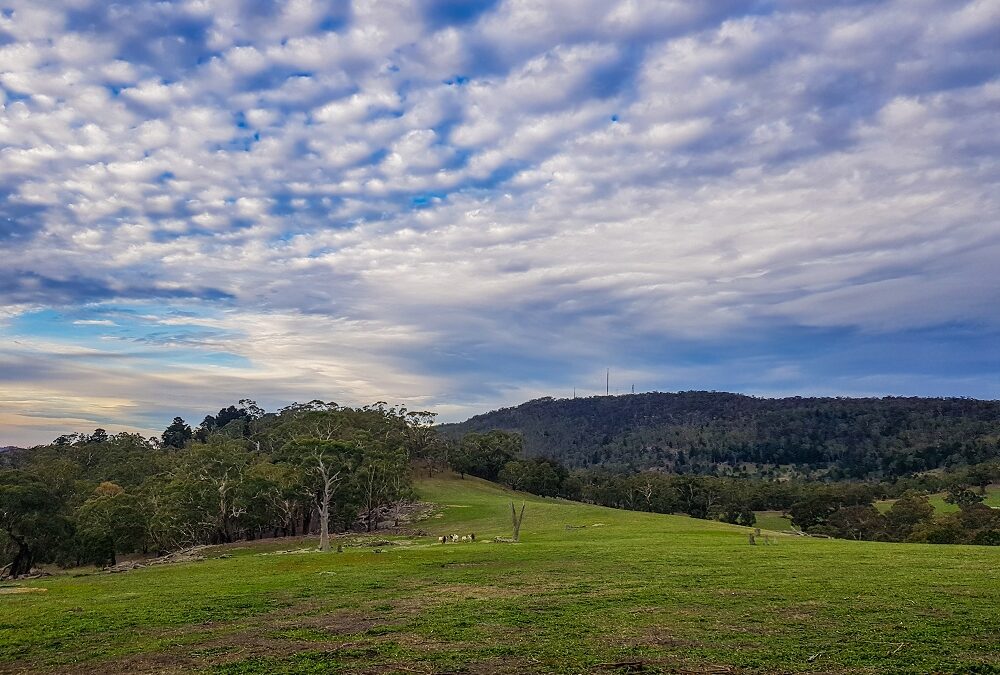
We live in a pretty arid part of the world, but living through the COVID-19 era, we’ve come to appreciate our landscape in new ways.
We live on Dja Dja Wurrung land, on the side of the small but majestic Leanganook. That’s the Dja Dja Wurrung name for Mount Alexander, and it means ‘his teeth’. You can watch this short video to find out more about the significance of the name.
Our farm borders the Leanganook (Mount Alexander) Regional Park, so our backyard is pretty big.
We go for a lot of walks on the mountain, and it’s always spectacular and calming. During lockdowns, we (and everyone else) weren’t able to leave home, so we spent even more time than usual in the bush.
Sharing our backyard with you
If you live in the city or a regional town it can be hard enough at the best of times to get into wild nature.
We know from first-hand experience that being in the bush is incredibly good for the soul. Even though photos are a poor substitute for the actual smells, sounds, and feel of being in the bush, the least we can do is share our walks with you.
So, here’s a couple of our favourite trees we visit regularly.
They have a way of reducing us to instant insignificance on the planet and putting any niggling worries into perspective.
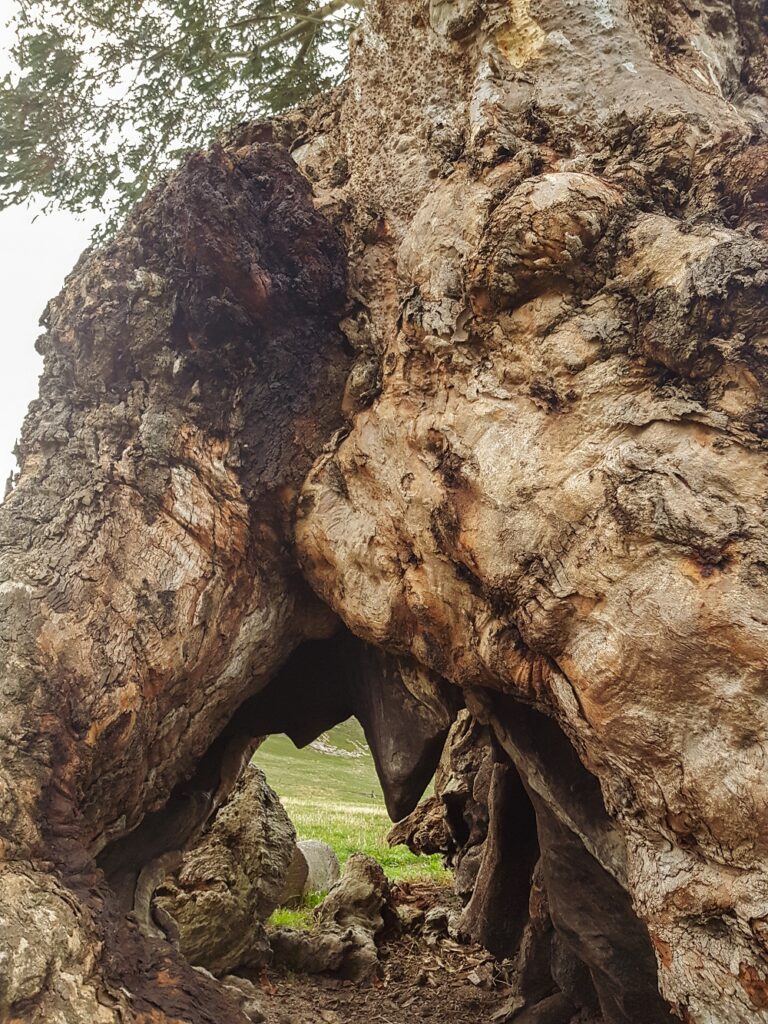
Just being in their presence makes us wonder how long these trees have been here.
Who have they sheltered? What storms have they weathered? Who (and what) has wandered past in the last couple of hundred years?
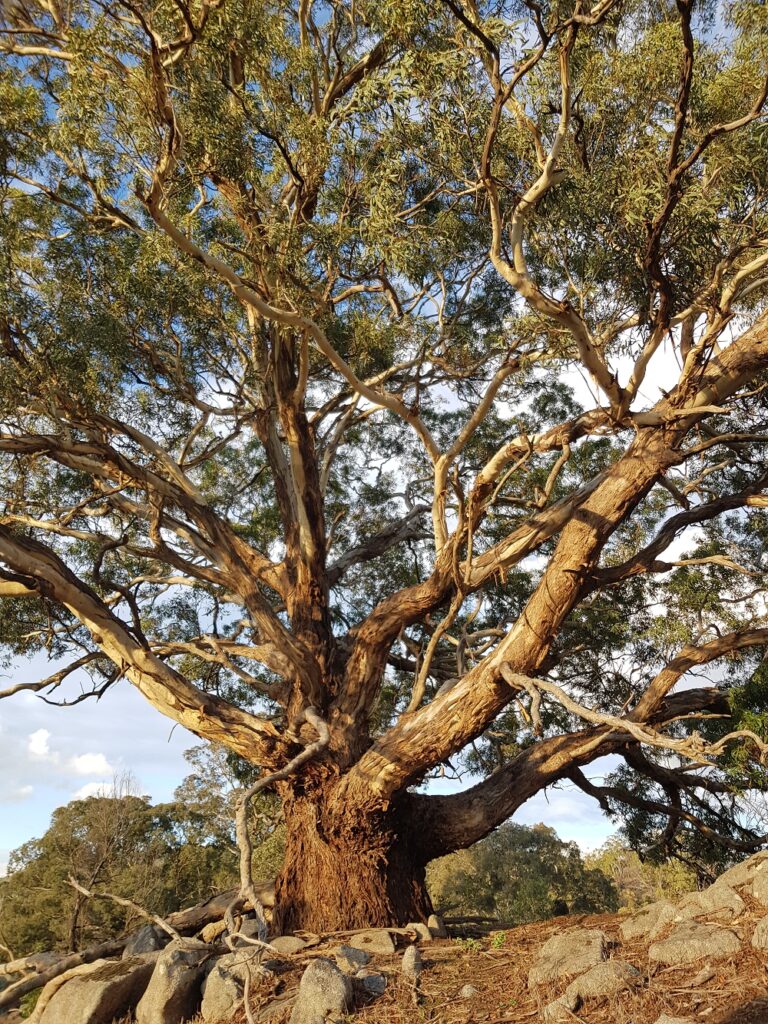
Granite bones
Our mountain is made of granite. Apart from providing the mineralisation that makes this region such a great place to grow fruit, it’s also a beautiful stone.
Granite stone formations can be huge, with lots of mysterious cracks and crevices. Granite doesn’t form caves as such, but it’s not at all unusual to find openings big enough to imagine someone or something seeking shelter inside at some time in history.
We always keep clear of the rocks. It feels like an invasion of privacy to poke about too closely, so we keep a respectful distance from their mysterious inner life.
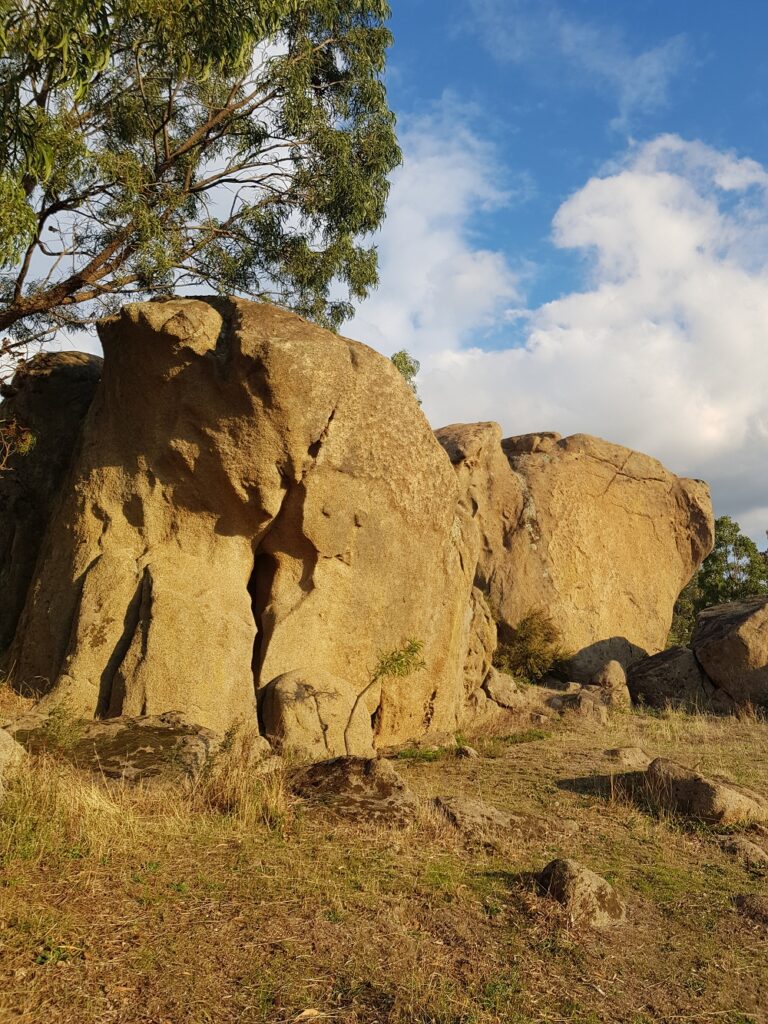
Things that shouldn’t be there
Less inspiring is the amount of feral and invasive flora and fauna we come across in walks on our beautiful mountain, like this herd of feral goats.
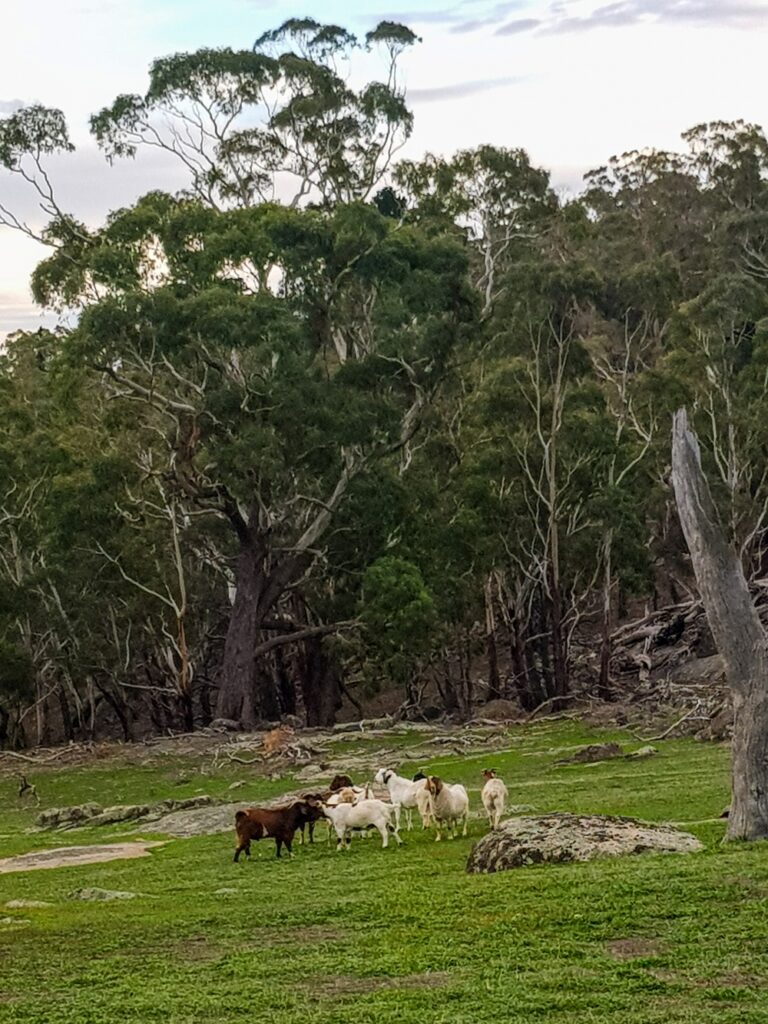
As beautiful and useful as goats are as animals, they need managing. They can even be quite good companions to fruit trees if they’re managed properly.
This lot has escaped from a farm somewhere (they have eartags) and taken up residence on the mountain. They go wherever they want, eat whatever they want, and seem to be breeding at an alarming rate.
This is a fragile and arid landscape, which has evolved with our native animals like kangaroos. While we’ve fenced to keep kangaroos off our farm (where they annoy us by competing for grass with the cows and damaging fruit trees), this is their land. They are perfectly evolved to live harmoniously here in the bush.
We kind of figure it’s up to us to exclude them from the farm, not try to get rid of them altogether, so kangaroo fencing is definitely the solution.

In the meantime, when we’re walking in their patch, we’re perfectly happy to admire them from a distance, and let them be!
Katie Finlay
Grow Great Fruit
Healthy Landscapes guide – purchase a copy now
Posted on 10 March, 2022 by Ivan
We are excited to announce that we have now sold over 120 copies of our Healthy Landscapes guide. If you don’t have one yet, be sure to get your copy before the first print run sells out! They are a bargain at just $15 and perfect for people new to the region, or anyone who wants to learn more about how to protect and restore habitat for our local wildlife. Proceeds allow us to cover printing and administration costs, and support our work.
Here’s just some of the feedback:
- I was in Castlemaine today and suddenly remembered this item about the book being available at Stonemans. They had it at the front desk and we are reading it now back at home. It is really outstanding and very relevant. Thanks to Connecting Country for their dedication. (Welshmans Reef landholder)
- Sensational! A must-read for anyone with a property from 1 to 1,000 acres. (Yapeen landholder/farmer)
- I wish we’d had this guide when I first moved here 25 years ago. (Golden Point landholder)
- Wow, what a fabulous publication. It covers all bases and is an essential read for all landowners. It has particular relevance for anyone doing due diligence before purchasing rural acreage, however big or small. (Walmer landholder)
For more information about the Healthy Landscapes guide – click here
Copies are now on sale – when COVID-19 related restrictions allow.

To get your copy ($15) head to:
Mount Alexander Animal Welfare (MAAW) Op Shop
12 Johnstone St, Castlemaine VIC
For shop information and opening hours – click here
Castlemaine Visitor Information Centre
44 Mostyn St, Castlemaine VIC
For centre information – click here
Stoneman’s Bookroom
101 Mostyn St, Castlemaine VIC
For shop information – click here
The Book Wolf
1/26 High St, Maldon VIC
For shop information – click here
Castlemaine Vintage Bazaar
The Mill, 1-9 Walker St Castlemaine, VIC
For shop information and hours – click here
A copy of the guide has been made available free of charge to each local Landcare and environmental volunteering group in the Mount Alexander region. This project is made possible through support from the Department of Agriculture, Water and the Environment, through funding from Australian Government’s National Landcare Program.
Help the Fryerstown Grevillea with a new app
Posted on 3 March, 2022 by Hadley Cole
The Threatened Species Conservancy has teamed up with John Walter from Malmsbury Landcare Group to develop a mobile phone app to capture and save data on populations of the threatened species, the Fryerstown Grevillea (Grevillea obtecta). Please read on for more information from the Threatened Species Conservancy.
Threatened Species Conservancy app for the Fryerstown Grevillea
The app will be launched on 12 March 2022 at 1.30 pm at the Lauriston Hall in Lauriston, VIC.
A training session will be held and participants will learn how to download and use the app, and visit a nearby population in both Lauriston Forest Reserve and in the Fryers Ranges Reserve.
The Fryerstown Grevillea (Grevillea obtecta) is generally found in the Fryers Ranges from around Taradale south west to the Porcupine Ridge area in central Victoria. The Lauriston population is an isolated and unusual form. It flowers from around mid-October to mid-November. However, it is easily recognised by its unusual leaves at any time of the year. The somewhat similar species, G. repens, also a rare Grevillea, is generally found to the west of Hepburn Springs and to the west and south of Daylesford.
John Walter has been observing this species now for over 20 years. With the help of the new app, observers of Grevillea obtecta – the Fryerstown Grevillea, can now record population locations and help build the knowledge base about this species.

For more information or to register for this event – click here
Connecting Country congratulates John and the Threatened Species Conservancy team on their fantastic achievement that will contribute to valuable data on our precious local threatened species!
Clean Up Australia Day – Sunday 6 March 2022
Posted on 3 March, 2022 by Ivan
Clean Up Australia is happening this Sunday 6 March 2022, including eight locations across the Mount Alexander region. Clean Up Australia inspires and empowers communities to clean up, fix up and conserve our environment. What was started 31 years ago, by an ‘average Australian bloke’ who had a simple idea to make a difference in his own backyard, has now become the nation’s largest community-based environmental event.
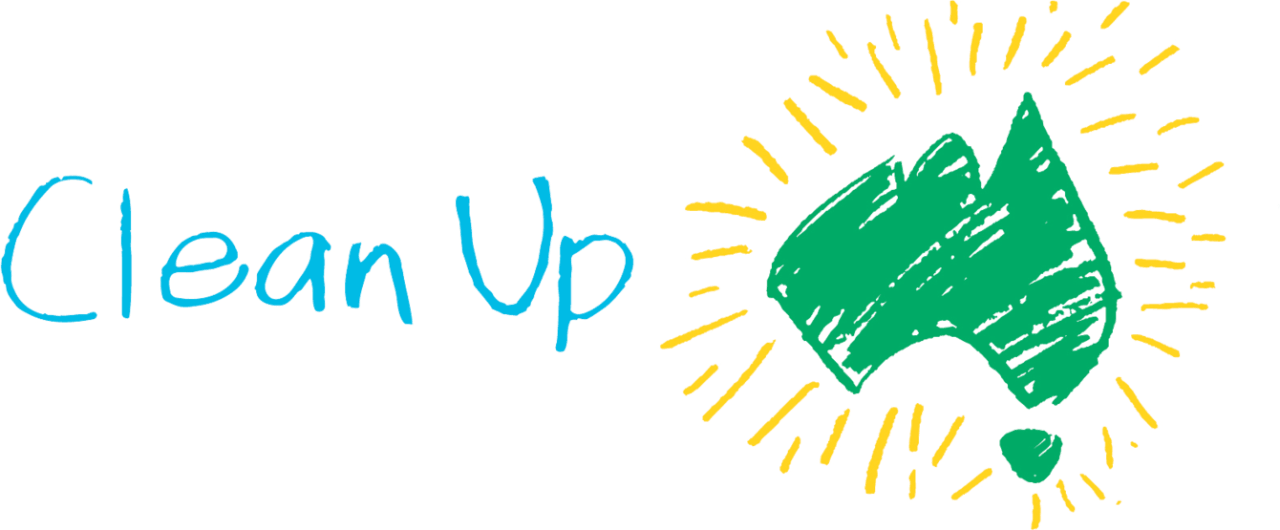
Local Clean Up Australia Day working bees on Sunday 6 March include:
- Friends of Campbells Creek Landcare – Meet at Winters Flat footbridge from 8.00 to 10.00 am. For more information – click here
- Golden Point Landcare – Expedition Pass Reservoir from 10.00 am to 12.00 noon. Bring gloves, bags provided. For more information contact Jen Pryce (ph: 0423900 590).
- Sutton Grange Landcare Group – Meet at Sutton Grange Hall at 9.00 am. For more information contact Zane Tronson (ph: 0410 597 485).
To view a map of Clean Up Australia Day working bees across the country, allowing you to search via postcodes and townships – click here

Rubbish dumped at Muckleford Bushland Reserve (photo by Muckleford Catchment Landcare Group)
Tiny houses for Tuans: Seeking YOUR help to combat a wildlife housing crisis
Posted on 2 March, 2022 by Jess
We all know how difficult it can be to secure housing in (or around) Castlemaine right now! But did you know it’s not just people facing a housing crisis in the Mount Alexander area? Many native birds and mammals need tree hollows as homes to protect them from predators and raise their families.
Missing tree hollows
The Mount Alexander region of central Victoria has a long history of removing large old trees with hollows for gold mining, agriculture, and timber and firewood harvesting, leading to a housing crisis for our wildlife. In Australia, it can take hundreds of years for trees to form natural hollows. Due to the profound environmental change caused by European colonisation and the gold rush, many trees in our region are still young. Regrowth and revegetation are great, but they can’t readily replace the number and types of tree hollows that our wildlife desperately need to survive.
The Brush-tailed Phascogale
The Tuan (also known as the Brush-tailed Phascogale) is a very cute hollow-dependent marsupial carnivore that can easily be identified by its characteristic black brushy tail. Phascogales eat mainly invertebrates, and forage for food on and under the bark of trees, on logs, and in leaf litter on the ground. They have an extraordinary life history – all males die from stress following their first breeding season before they reach one year of age. This threatened species is in decline in Victoria and has undergone substantial range contractions and regional extinctions. Key threats include predation by cats and foxes, climate change and drought, habitat removal and degradation, and the extensive loss of trees with hollows. Recent research has highlighted that the Mount Alexander region is a stronghold for tuans and is important for the future conservation of this species.
Our nest box program
In 2010, Connecting Country installed 450 high-quality, specially-designed phascogale nest boxes (effectively, ‘tiny houses’) across 150 sites in the Mount Alexander region. We have an amazing team of skilled, hardworking volunteers who now monitor at least a subset (300) of these nest boxes frequently. Monitoring results indicate that small native marsupials perceive our nest boxes as valuable to provide shelter from predators and to rear their young. At least 150 nest boxes (35%) have had evidence of use by tuans. Another native animal, Krefft’s glider (formerly known as the Sugar Glider) uses our nest boxes too – nearly 90% of our nest boxes have been used by this species at some stage since 2010. Our monitoring program is robust. Thanks to a collaboration with scientists from La Trobe University, the results of our study were recently accepted for publication in the international scientific journal Wildlife Research.
We purchase high-quality nest boxes from Wildlife Nestboxes, a local business based in Castlemaine. These are thoughtfully designed: made with high-quality plywood, a sloping roof to keep the rain out, and have an entrance that is just large enough for a tuan to use, while keeping predators out.
Nest box maintenance
Unlike natural tree hollows, nest boxes typically have a shorter useful life of 5-20 years. They are exposed to the elements, and inevitably degrade and need replacing and maintenance over time. During our last survey in autumn 2021, 96 nest boxes required maintenance of some kind. Several volunteers raised concerns about this and expressed enthusiasm to replace or repair nest boxes, with one volunteer commenting: ‘it just makes me so sad to think that all these nest boxes are not able to be used by phascogales’. Based on expert advice, the most efficient and safe approach is to swap broken nest boxes with a new one on-site, then repair broken nest boxes (where possible) at a workshop at a later date. The repaired nest boxes can then be re-installed when another box eventually degrades.
Nest box monitoring 2022
In partnership with our volunteers, private landholders and Landcare groups, and thanks to a generous grant from the WIRES national grant program, volunteers will monitor nest box sites again in autumn 2022. This provides an ideal opportunity for us to replace broken nest boxes. We are very grateful to landholders and Landcare groups involved in the program who allow site access, to our volunteers for contributing their expertise and time to monitoring our nest boxes. We also acknowledge WIRES for providing funding to help us keep our volunteers safe, well-equipped and supported, and carefully collate and report on our data. We are extremely proud of this project, and this year, we believe a small additional investment will go a long way to provide homes for wildlife.
We are reaching out to our community for support to purchase new nest boxes and provide new, safe, tiny houses for Tuans.
Buy a nest box to provide ‘Tiny houses for Tuans’
Donating to our ‘Tiny Houses for Tuans’ campaign provides excellent value for your investment:
- 100% of funds donated to this project will be spent directly on nest boxes and their installation – providing a brand-new, high-quality, tiny home for a marsupial. We already have the resources to manage the project and install the nest boxes.
- One high-quality nest box costs $100, and we are seeking a total of $6, 000 to replace 60 broken nest boxes. Any additional donations will be used to repair broken nest boxes, and to replace nest boxes that wear out in future.
- Nest boxes will be installed by volunteers at the same time as they are visiting the sites for monitoring, making this a highly-efficient project.
- As we are purchasing from Wildlife Nestboxes, funds will support a local small business.
- Replacing broken nest boxes will bring joy to project participants: skilled volunteers, landholders, associated Landcare groups, and staff, many of whom care deeply about phascogales and their conservation.
- Our 12 year track record demonstrates the value of nest boxes in providing supplementary habitat and a monitoring tool.
Donate today via our Give Now page – click here
We have a secure only payment system and all donations (>$2) to Connecting Country are tax deductible.
Can’t donate? Here are some other ways you can help threatened tuans:
- Keep pets, especially cats (known predators of phascogales), indoors at night when tuans are active
- Retain leaf litter, logs, and trees (especially mature trees) on your property, as these provide foraging and den resources for tuans
- Provide your own ‘Tiny Houses’ – consider installing nest boxes on your property
- Contribute to restoring healthy forests by joining your local Landcare or Friends group. To find a group – click here
- Consider volunteering on Connecting Country’s monitoring project (next surveys in autumn 2022) – email jess@connectingcountry.org.au to register your interest
- Share our campaign with your friends and networks.






